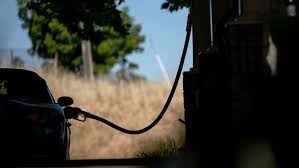
Breaking News
 Plant the rain--don't drain it--to end the drought with passive water harvesting by Brad Lancast
Plant the rain--don't drain it--to end the drought with passive water harvesting by Brad Lancast
 Family-style ecovillage is co-housing at heart of huge food-forest
Family-style ecovillage is co-housing at heart of huge food-forest
 All six victims of San Diego horror plane crash are identified... as possible cause is revealed
All six victims of San Diego horror plane crash are identified... as possible cause is revealed
 10 Surprising Foods I Freeze Dry (and 1 I'll Never Try Again)
10 Surprising Foods I Freeze Dry (and 1 I'll Never Try Again)
Top Tech News
 New AI data centers will use the same electricity as 2 million homes
New AI data centers will use the same electricity as 2 million homes
 Is All of This Self-Monitoring Making Us Paranoid?
Is All of This Self-Monitoring Making Us Paranoid?
 Cavorite X7 makes history with first fan-in-wing transition flight
Cavorite X7 makes history with first fan-in-wing transition flight
 Laser-powered fusion experiment more than doubles its power output
Laser-powered fusion experiment more than doubles its power output
 Watch: Jetson's One Aircraft Just Competed in the First eVTOL Race
Watch: Jetson's One Aircraft Just Competed in the First eVTOL Race
 Cab-less truck glider leaps autonomously between road and rail
Cab-less truck glider leaps autonomously between road and rail
 Can Tesla DOJO Chips Pass Nvidia GPUs?
Can Tesla DOJO Chips Pass Nvidia GPUs?
 Iron-fortified lumber could be a greener alternative to steel beams
Iron-fortified lumber could be a greener alternative to steel beams
 One man, 856 venom hits, and the path to a universal snakebite cure
One man, 856 venom hits, and the path to a universal snakebite cure
 Dr. McCullough reveals cancer-fighting drug Big Pharma hopes you never hear about…
Dr. McCullough reveals cancer-fighting drug Big Pharma hopes you never hear about…
US Gasoline Prices Heading Into Memorial Day Weekend Are The Lowest Since COVID

Thanks to the ongoing slide in oil prices, after adjusting for inflation (real terms) average U.S. retail gasoline prices going into Memorial Day weekend are 14% lower than last year, according to EIA calculations. They are in fact, lower than where they were coming into Memorial Day every year this decade except 2020, in the immediate aftermath of covid.
Memorial Day weekend is one of the biggest travel weekends of the year, and many of those travelers will go by car. The American Automobile Association (AAA) expects 39.4 million people will travel by car over Memorial Day weekend this year, an increase of 3% compared with last year.
Substantially lower crude oil prices, the main component of retail gasoline prices, have kept retail gasoline prices lower than usual going into spring. From May 1 to May 19, Brent crude oil prices averaged $64 per barrel (b), 20% less in real terms than in January and 26% less than in May 2024. Concerns about future economic growth, record-high U.S. crude oil production, and, more recently, announcements that OPEC+ will accelerate crude oil production increases have contributed to falling crude oil prices.
Retail gasoline prices on the Monday before Memorial Day weekend are only 4% (or 13 cents/gal) higher than on the first Monday of January. Retail gasoline prices typically increase much more than that as gasoline demand increases going into the summer driving season and retailers are required to start selling more expensive summer-grade gasoline. Over the last 10 years and excluding 2020, retail gasoline prices increased 19% (or 49 cents/gal) on average from January to May.
U.S. gasoline prices vary regionally, reflecting local supply and demand conditions, state fuel specifications, and state taxes. Retail gasoline prices are usually the highest on the West Coast because of:
The region's limited connections with other major refining centers
Tight local supply and demand conditions
Higher-than-average state taxes in several West Coast states
Gasoline specifications for California that make gasoline more costly to manufacture
On May 19, West Coast prices averaged $4.29/gal, down 10% in real terms from this time last year.



